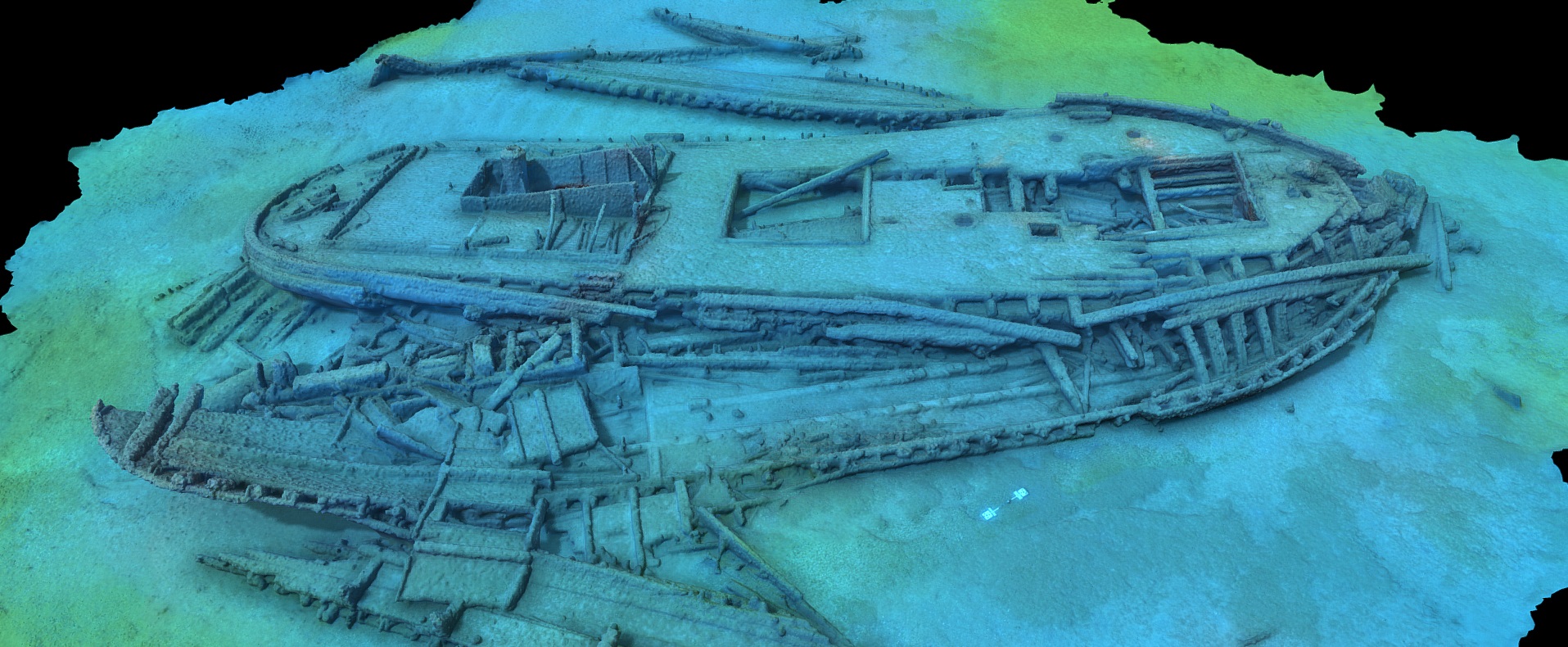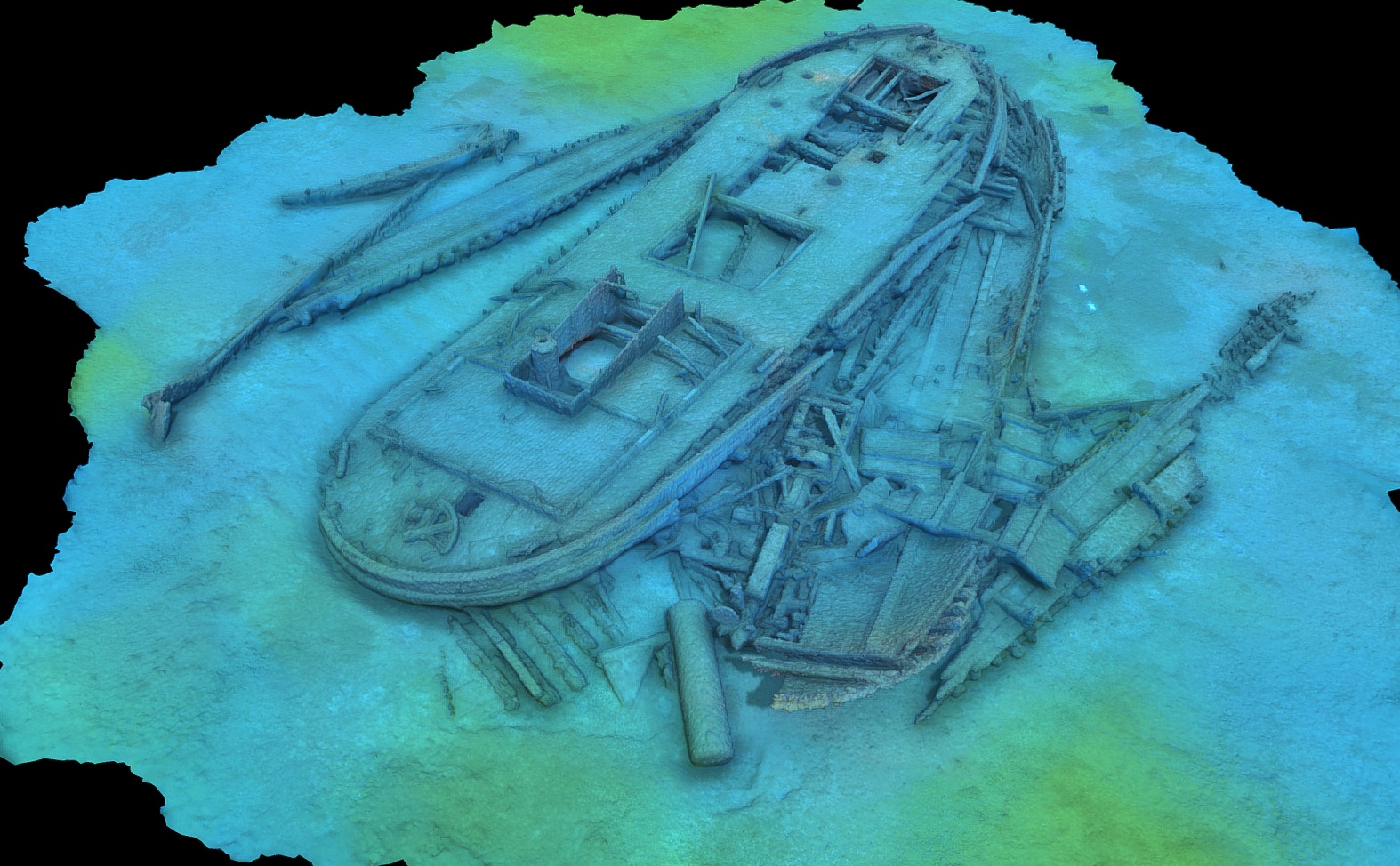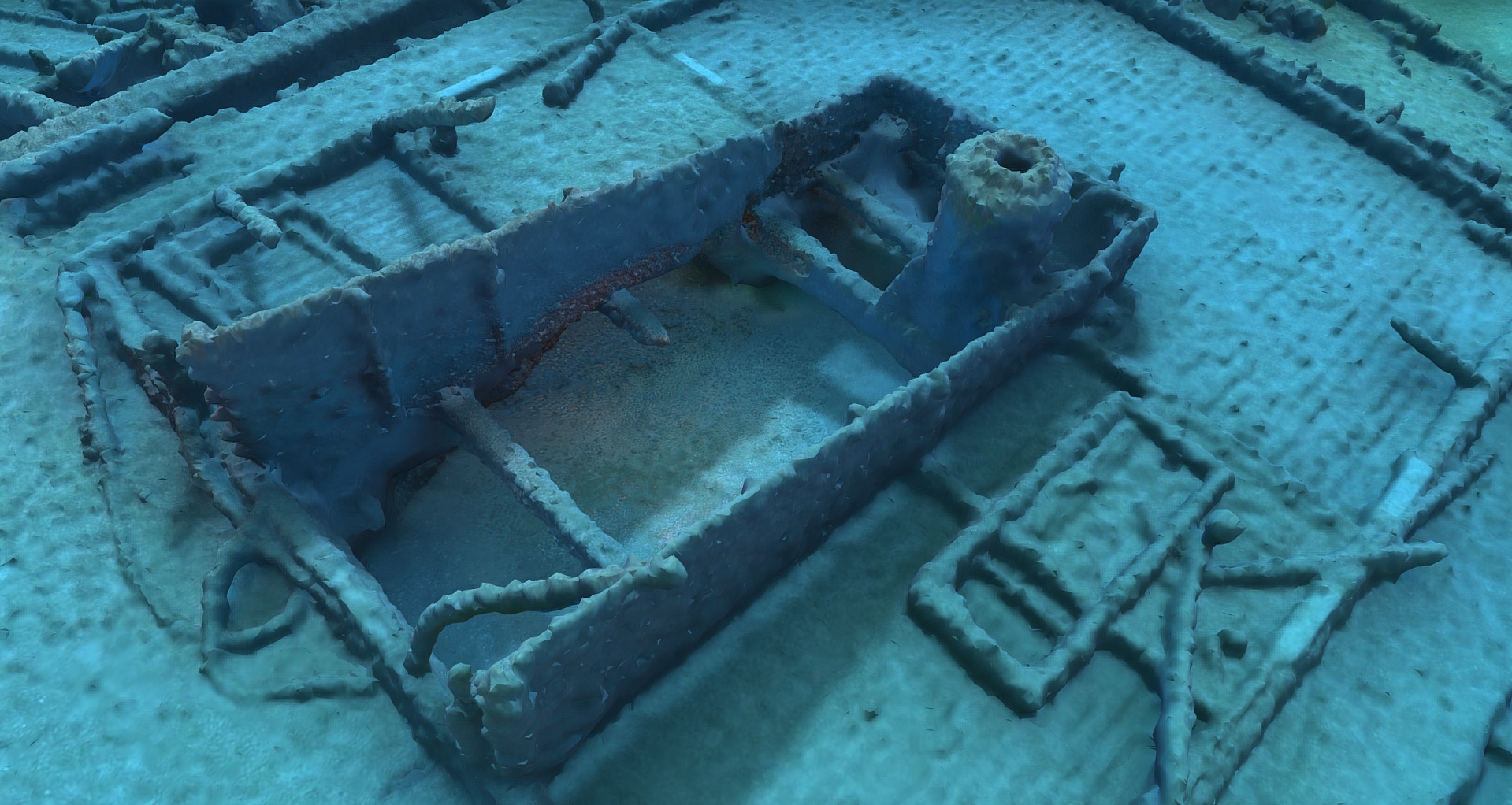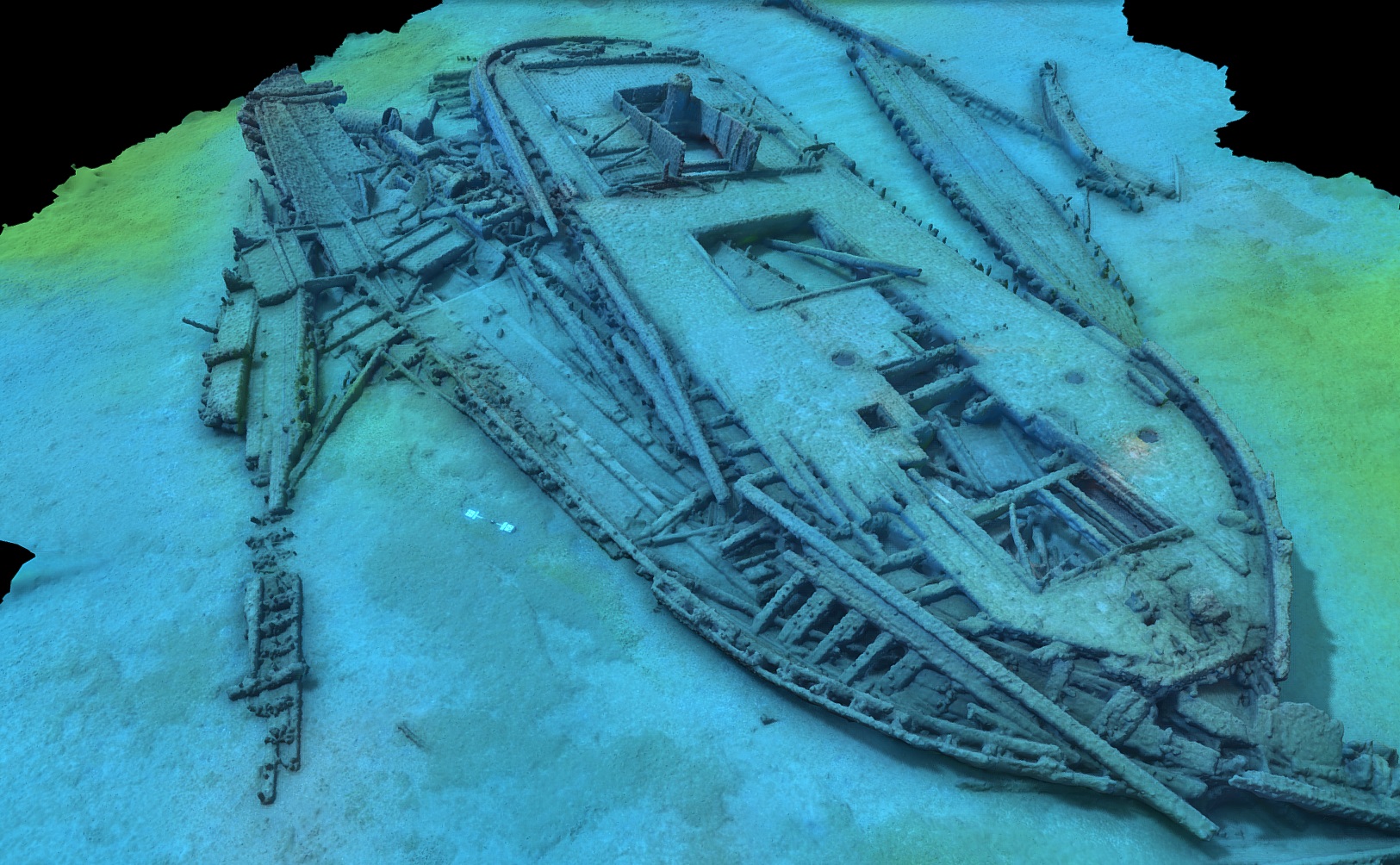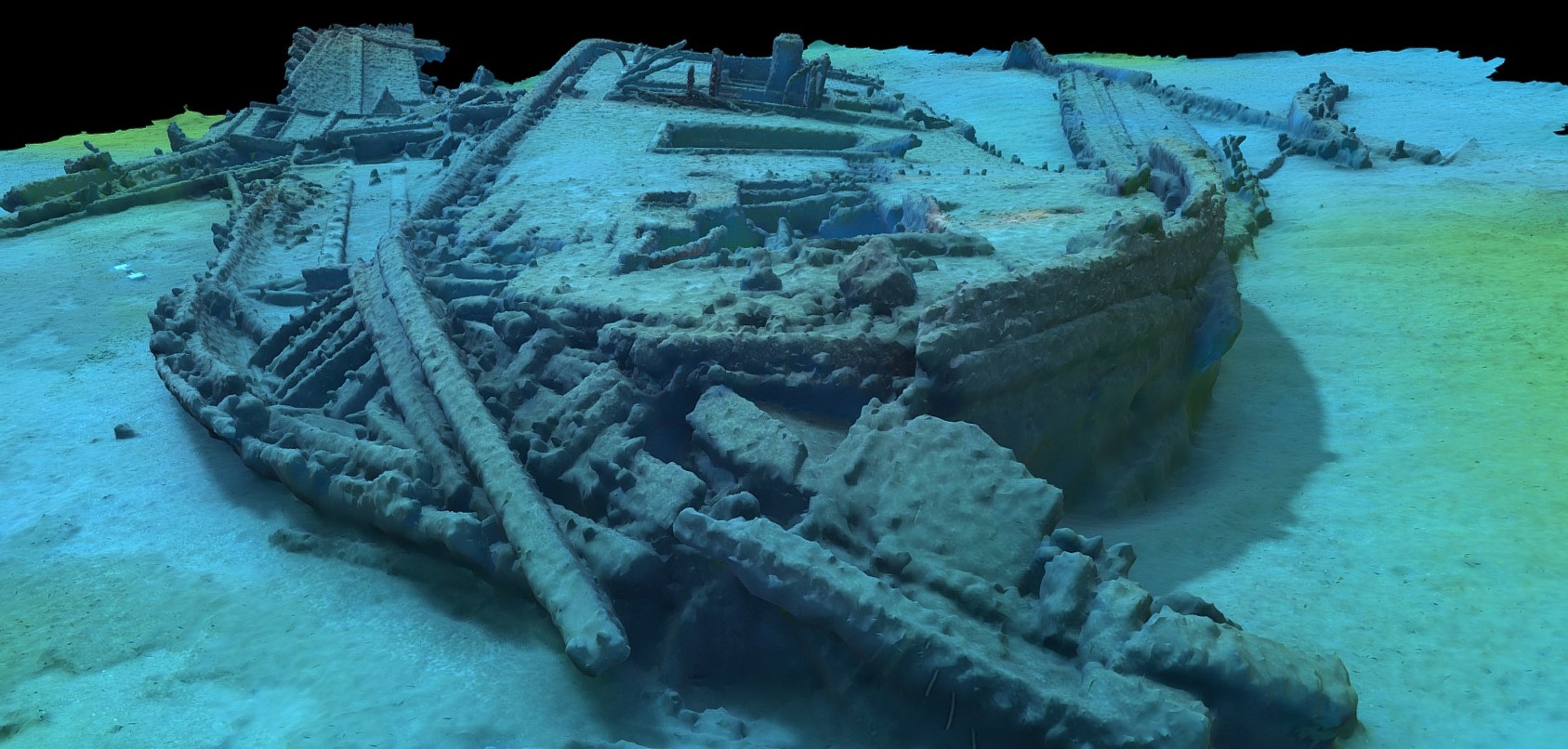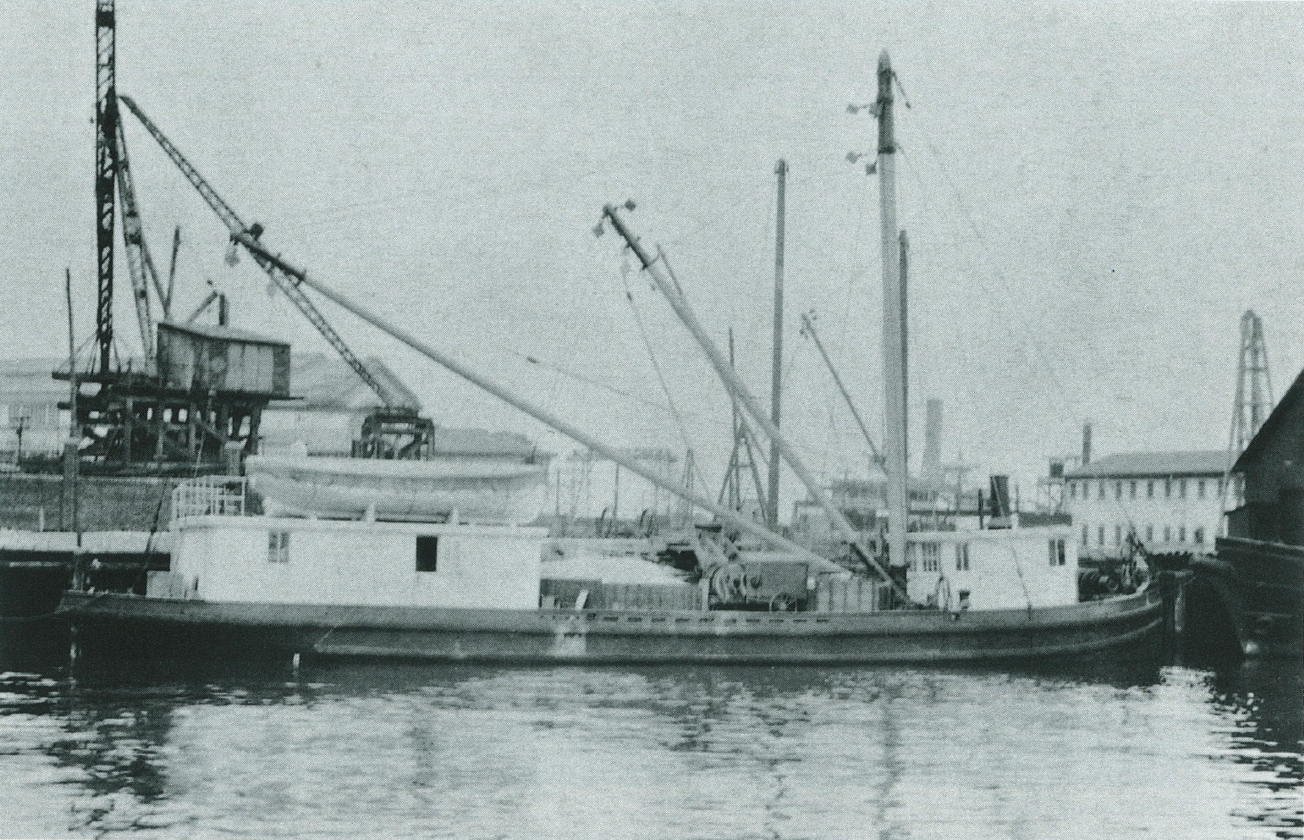Service History
The
Salvager was originally constructed as the United States Light House Service Tender
Elm at the yards of Rice Brothers Company at East Boothbay, Maine in 1917. Construction of the
Elm began on 13 January 1917. On 10 July 1917, there was a massive fire at the Rice Brothers shipyard which decimated the shipyard, destroyed a few vessels, and damaged other vessels then under construction including the
Elm. Only the keel, stem, sternpost, and four frames survived the blaze. Due to this, the construction and launch of the
Elm was delayed until 5 June 1918. After the installation of the propulsion plant, the
Elm was finally commissioned into the US Lighthouse Service on 18 July 1919.
The USLHT
Elm was a single-decked power-derrick barge, constructed entirely of wood except for the casing around the engine space. It was fitted with a derrick mast (crane) and two booms one 68 feet long and the other 40 feet long, with gear and tackle powered by a steam hoisting engine that was supplied with steam from a small vertical boiler, it was also fitted with an oil-engine driven air compressor to deliver air for running the pumps and blowing the whistle. The
Elm was powered by a single 3-cylinder 150 h.p. kerosene-powered engine that drove a four-bladed cast iron propeller 5 feet 6 inches in diameter. The barges' crew compliment was two officers and four crew for a total of six.
The
Elm was constructed to fulfill a specific role, on 1 July 1916 congress appropriated $100,000 for aids to navigation on the Hudson River, New York. A power barge with derrick was required for this project and the US Lighthouse Service could not find a suitable barge to fulfill this role.
Therefore plans and specifications were made for a wooden powered derrick barge and on 13 January a contract was awarded to Rice Brothers for $29,400. Aids to navigation on the the Hudson River were made of wood and built on wooden cribs and every year these beacons were either be damaged or completely destroyed by ice flows down river during the winter. The US Lighthouse Service had to constantly either repair or completely rebuild these structures once every year and therefore, at the beginning of navigation, these lights would be out.
The tender
Elm was initially based out of Tompkinsville, New York on Staten Island for the third lighthouse district. Its first year of service involved replacing the old wooden post cribs for river lights with more durable concrete crib foundations. During the 1919 season,
Elm was able to build 14 total concrete foundations, in the Hudson River, East River, Newark Bay, and the Raritan River. The work of the
Elm and its crew saved the Lighthouse service $3,800 in annual repairs for the fourteen lights in the Hudson River.
By 1923 the
Elm was listed as based out of Staten Island, New York. On 9 November 1923 the
Elm called at the dock of Eugene Ball at Block Island, Rhode Island for water. While the
Elm was departing, the aft guard rail struck a supporting pile for the dock damaging the piling which rendered the dock "entirely useless". Eugene Ball requested $50 in damages for replacement for the damaged piling. In 1927, the
Elm was listed as undergoing routine repairs. By 1929 the
Elm was transferred from the third district to the eleventh district and its new homeport was Detroit, Michigan.
Elm was laid up in 1932. On 1 August 1934 the superintendent of lighthouses in Detroit took sealed bids for the
Elm and sold the vessel on 14 August 1934. Presumably
Elm was sold to its final owner Johns Johnson of Columbus, Ohio
In 1947 after reading a magazine article titled "Sunken Wealth and Where to Find It" two years prior Johnson developed treasure fever for the possible wealth sunk in the Great Lakes. Johnson had purchased the
Elm painted it silver and renamed it
Salvager. The former tender and its booms were perfect as a dive platform for salvage operations. Salvager was equipped with two dive suits, air compressors to support divers, and a two-way underwater telephone for communication. Johnson assembled a crew of five including divers Douglas Wagner also of Columbus and his son apprentice diver Harry Johnson. Johnson had first based the
Salvager out of Racine, Wisconsin and was docked at the Fourth Street Bridge on the Root River. Johnson's first target was the wreck of the SS
Wisconsin sunk 29 October 1929 off of Kenosha in 130 feet of water.
Johnson and crew had done much work and practice dives in the Root River and the waters around Racine. Johnson had consulted Reuben J. Le Clair one of the Coastguardsmen who was among the rescuers who went out to the
Wisconsin the night is sank to help located the wreck. Johnson's plans to use
Salvager to recover the "treasure" of the SS
Wisconsin never materialized and he had sold the
Salvager to Al Scott, Frank Fodor, and Fred Dananany in fall 1947.
Newspapers of the time were confused on the identity of
Salvager, but the details were close. When Johns Johnson owned
Salvager, it was described as a former lightship built in Bedford, Maine in 1918 that he had converted into a salvage vessel. Later after it sank it was described as "prior to being converted into a barge the old craft is said to have been a lighthouse tender".
Final Voyage
On 14 November 1947, while the
Salvager was tied up at the old Goodrich Line docks near the Main Street Bridge in Racine when a November gale struck. The storm produced 30 foot waves that came up over the breakwater and up the Root River.
Salvager was torn from its moorings and damaged. The next day on 15 November
Salvager sank into 23 feet of water in the Root River 30 feet away from the dock and 200 feet west from west of the Main Street Bridge on the North Side of the Root River. On 5 May 1948 The US Army Corps of Engineers contracted with marine contractor B.J. Gallagher to raise the
Salvager and dispose of it into Lake Michigan. Gallagher worked with Milwaukee diver Walter Richter to raise the
Salvager. Large salvage tanks were attached to the
Salvager and pumped out raising the vessel to the surface. Gallagher then used his tug
B.F. to tow the vessel out into Lake Michigan where it was disposed. Newspapers of the time conjectured "Evidently, old Lake Michigan frowns own those who would even take her loot." and thought it poetic if
Salvager was sunk near the wreck of the
Wisconsin.
Today
The wreck of the
Salvager was relocated in September 2023 by the NOAA Office of the Coast Survey while they were remapping the bottom of Lake Michigan for new nautical charts. Recent dives in 2025 and historical research by the Wisconsin Maritime Preservation Program and our partners at the Wisconsin Underwater Archeological Association, Brendon Baillod and Bob Jaeck positively identified this wreck as the
Salvager former USLHT
Elm. Research is always ongoing!
